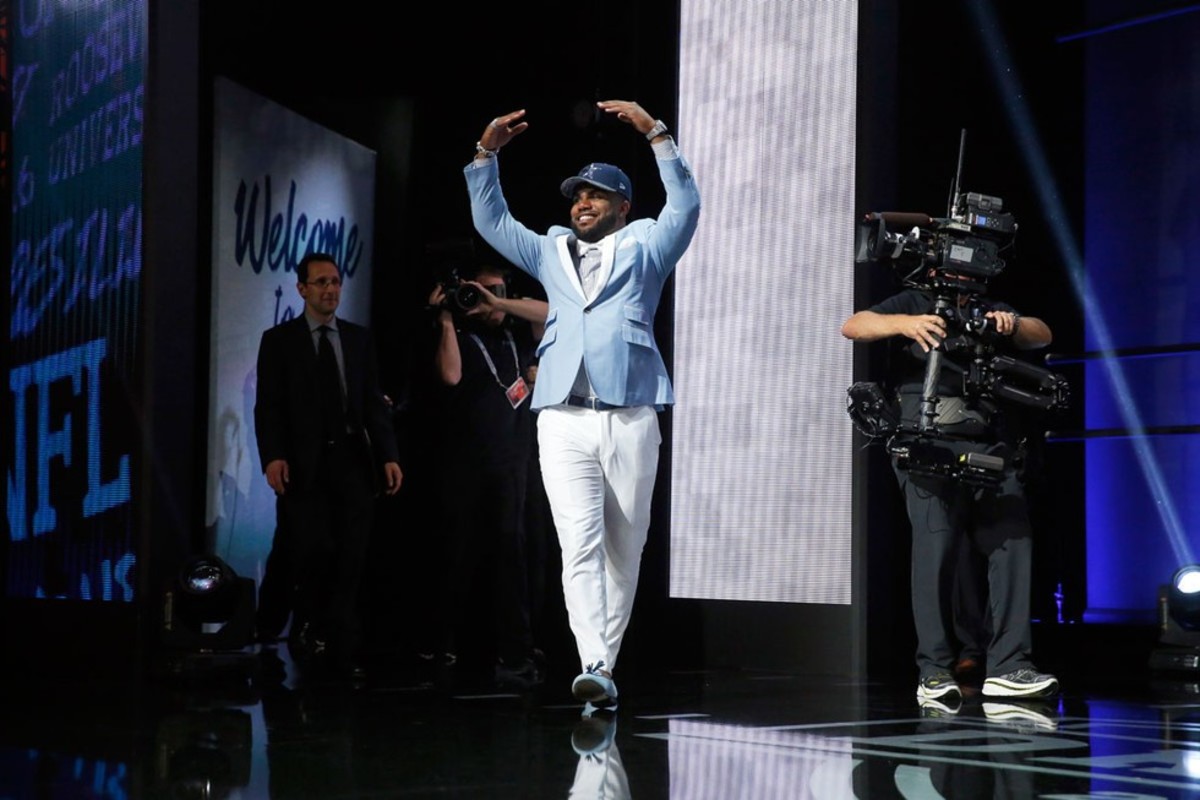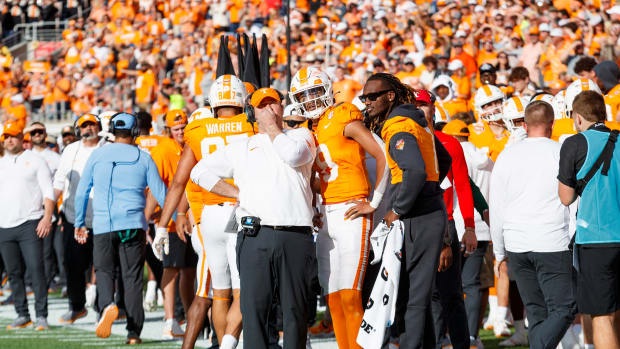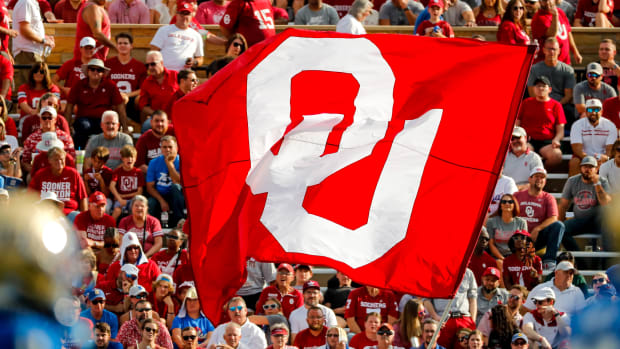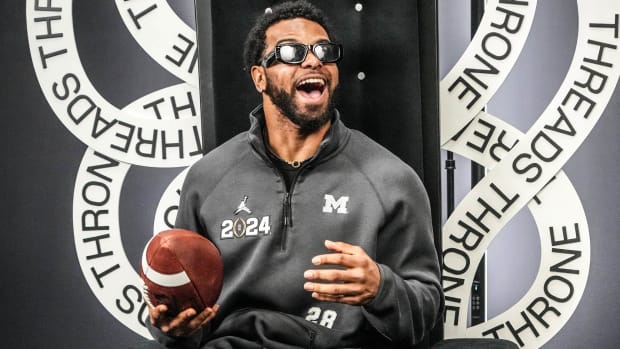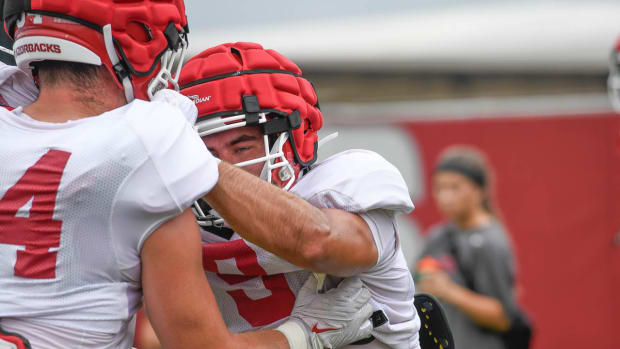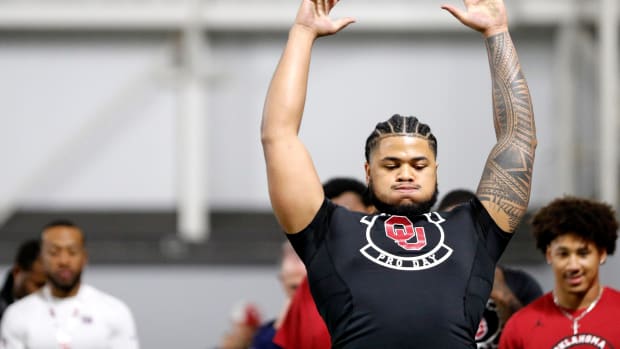What did the NFL draft tell us about college football? The Big Ten is closing the talent gap; Punt, Pass & Pork
[video: 13724912]
The fallout from the first round of the NFL draft will last for a while in college football, as the NCAA and Ole Miss untangle the second part of the Laremy Tunsil hack. But there is little new information to digest on that front, and we may not have a clear picture of what it all means for weeks or even months. However, the 2016 draft offered a trove of information about the college game beyond the Tunsil drama. Let's look at some of the takeaways after three days of picking and grinning.
The NFL still thinks the SEC has the best players, but the Big Ten has closed the gap.
It's impossible to convince the people who believe we in the media are part of some conspiracy to pump up the SEC, but the draft offers the most objective measure of which conference features the best players. That league remains the SEC. NFL coaches and general managers' jobs are on the line when they select players. They won't let conference allegiance get in the way of selecting the guys they consider best, nor will they take a player whom they consider inferior just because he played in a certain league.
The SEC (51) led all conferences in players picked for the 10th consecutive season. The ACC, which ranked second to the SEC in the previous three years, tied the Big 12th for fourth with 26 as Florida State reloaded following the loss of 29 draftees from 2013–15. The biggest mover was the Big Ten, which jumped from 35 players drafted in 2015 to 47 drafted this year. That included six first-rounders, second to the SEC's eight.
The Big Ten has a fascinating recent draft history. After having 41 players drafted in 2012, the league had only 22 players selected in '13. Those numbers rose in '14 (30) and '15 (35), but they took a huge leap this year. The obvious reason for the jump is Urban Meyer. Ohio State had 12 players drafted, including three in the top 10, five in the first round and an NFL draft-record 10 players chosen in the first three rounds.
Of the 12, only Braxton Miller, Nick Vannett and Cardale Jones signed in 2011 to play for former coach Jim Tressel. (Jones would go to prep school and sign again in '12 with Meyer.) Meyer has raised the level of play in the Big Ten by signing the kind of athletes who can compete for national titles. It's no accident he came to Columbus with a working knowledge of how to identify such athletes. His rude introduction to SEC football during a painful stretch of his first season at Florida—it included trips to Alabama and LSU and a few tears—in '05 gave Meyer a clear picture of what he needed to play for championships. His clashes with Nick Saban after Saban took over at Alabama only crystallized the profiles of the players Meyer seeks at each position.
Ohio State must replace a lot of starters, but don't be shocked if the Buckeyes keep cranking out draft picks. Also, don't be shocked if Michigan and Michigan State join them. The Spartans only had five players drafted from the winningest senior class in program history, but all that winning has allowed Mark Dantonio to get in on more higher-ranked recruits. Michigan State coaches have been excellent at turning hidden gems such as former walk-on offensive tackle Jack Conklin (No. 8 to the Titans) into stars, but they'll probably produce more NFL players as they turn that developmental acumen on four- and five-star recruits. Meanwhile, Jim Harbaugh proved at Stanford he can develop players the NFL wants. He'll do the same thing at Michigan.
What does this mean in the grand scheme? It means the Big Ten should have a team or two in the national title picture every year going forward. Meyer, Dantonio and Harbaugh don't seem to be slowing down, and the need to compete with them will force the rest of the Big Ten to raise its level just as the SEC did to keep up with Saban when he was at LSU at the turn of the century. The NFL's objective player ranking service has spoken, and the SEC and Big Ten are the two most talented leagues at the moment.
The new PAT line hasn't launched a kicker revolution quite yet.
When he decided to leave Florida State with a year of NCAA eligibility remaining, Roberto Aguayo theorized that NFL teams may begin drafting kickers higher because the longer extra point makes the best ones more valuable. That could still happen, but all this draft proved was that Aguayo is a particularly special kicker.
The Buccaneers traded a fourth-round pick to move up and take Aguayo at No. 59. That didn't start a run on kickers, though. Aguayo was the only placekicker selected. That doesn't mean he won't be important for the Bucs, who struggled with field goals last season. Aguayo will also come in handy on kickoffs. Because NFL teams will now get the ball at the 25-yard line on touchbacks, kickers who can hang a kickoff high and drop it in a corner at the one-yard line—as Aguayo can—will be extremely valuable. It may be the combination of that rule and the new PAT rule will convince more teams to target kickers earlier in the draft. If Aguayo's selection proves wise for the Bucs, that seems like a strong possibility.
Meanwhile, the two long snappers I wrote about last week found teams. The Lions selected Baylor's Jimmy Landes in the sixth round, and the Broncos signed Georgia's Nathan Theus as an undrafted free agent.
Anonymous NFL Scout remains the worst.
Michigan State quarterback Connor Cook's slide to the bottom of the fourth round remains mystifying. Cook will likely do fine with the Raiders, and Oakland coach Jack Del Rio should feel confident plugging in Cook if starter Derek Carr gets injured, because Del Rio got a steal. Cook could have stepped in and immediately competed for a starting job on a team without an established starter. College quarterback win-loss records are not necessarily predictors of NFL success, but Cook's ascension to the starting job in East Lansing in 2013 was the X-factor that turned Michigan State from a pretty good program to a nationally elite one. The Spartans won two Big Ten titles over the next three years.
What remains perplexing about Cook's fall is that none of his detractors would offer a specific reason why they didn't like him. There was a lot of something-seems-off talk and oblique references to Cook's failure to be elected one of Michigan State's three captains last season. We know NFL teams didn't care that much about who was elected captain at Michigan State. Center Jack Allen was the only player on the Spartans' offense elected captain, and he didn't get drafted at all.
I still can't figure out why Anonymous NFL Scout was so weird about Cook. He shredded Cam Newton in 2011, but at least that came with some specific complaints. (Complaints that turned out to be hilariously incorrect, by the way.) This year, Anonymous NFL Scout bashed Eli Apple's culinary skills. Since he doesn't seem concerned with the feelings of the prospects he's ripping, why was Anonymous NFL Scout so coy when it came to Cook? We may never know.
A random ranking
I've been watching season two of Unbreakable Kimmy Schmidt on Netflix, and every episode reinforces how much joy a great theme song can generate. The TV theme song began dying in the 1990s, but in honor of Jenna von Oÿ's birthday Monday, let's rank the best theme songs from shows that continued the tradition during the decade that killed the concept.
1. The Fresh Prince of Bel-Air
2. Friends
3. Law & Order
4. Beverly Hills, 90210
5. In Living Color
6. Hey Dude
7. The X-Files
8. ER
9. Martin
10. Family Matters*
*Perfect Strangers spinoff Family Matters debuted in 1989. That should make it ineligible for this list. But since the series began with Louis Armstrong's "What A Wonderful World" as its theme and switched during its first season to Jesse Fredrick's "As Days Go By," we'll make an exception for the senseless killing (we assume) of Judy Winslow.
First-and-10
1. Other than a brief, say-nothing statement released early Friday morning, Ole Miss has maintained silence regarding former offensive tackle Laremy Tunsil's apparent admission on draft night that he was paid by someone on the football staff while in school. I wrote this about the case last Friday, but the longer Ole Miss goes without saying anything, the easier it is to assume that the Rebels did not use the particular loophole I described when it was available to them.
Ole Miss doesn't have to say anything here. It isn't going to win in the court of public opinion anyway. At this point, it has to be concerned with the NCAA. Remember, the NCAA can't directly use anything Tunsil said Thursday night against the school. Investigators would need Tunsil to say the same things to them, and he doesn't have to talk. NCAA investigators can, however, use everything that came out on draft night to help guide their pursuit of other evidence. If they find anything—and if anyone was foolhardy enough violate most of my Cheating For Dummies rules by running payments through the football office, the NCAA will probably find something—then Ole Miss must try to negotiate its way to a resolution.
Tunsil's attorney, Steve Farese, told SiriusXM's Mad Dog Radio this weekend that the issues raised on Thursday had already been discussed with the NCAA. That's plausible, since the NCAA investigated Tunsil last year and suspended him for the first seven games for taking loaner cars and a promissory note for a down payment. If that indeed happened, then anything regarding this situation would be contained in the NCAA's Notice of Allegations that Ole Miss has been refusing to release for months. "My information is that issue, in and of itself, has already been discussed previously with the NCAA and there was nothing to it," Farese told SiriusXM. "Once the truth comes out about that text, and I hate to make a pun, but the text is taken out of context. And once it is found out what this is all about, it will be much to do about nothing."
Shakespeare weeps, Mr. Farese. As for his client's former school, we'll see. The NCAA can't do anything to Tunsil, so the NCAA should be of little concern to Farese. The Ole Miss athletic department general counsel might feel differently.
2. AL.com's Matt Zenitz reported this weekend that the resignation of Alabama defensive line coach Bo Davis was linked to contact with recruits during periods in which coaches are not allowed in-person contact with recruits. The situation is similar to the one Florida faced with receivers coach Joker Phillips in 2014. Like Davis, Phillips was forced to resign. Florida faced no other punishment from the NCAA.
Zenitz also reported that Alabama is expected to hire former Buffalo Bills defensive line coach Karl Dunbar.
3. In far less serious Alabama assistant coach news, offensive coordinator Lane Kiffin discovered Bitmoji last week.
4. Demetris Robertson, one of the top-ranked receivers in the class of 2016, has chosen a school. The Savannah, Ga., native who received a visit from the Notre Dame equipment truck earlier this year will head across the country to Cal. Robertson was also considering Notre Dame and Georgia.
5. Well, that was quick.
6. Even though Texas Tech graduate transfer quarterback Davis Webb has been looking around, Colorado coach Mike MacIntyre told ESPN.com he still expects Webb to wind up in Boulder.
7. Idaho will drop from the FBS to the FCS, the school announced last week. There probably needs to be some culling of the FBS at the bottom, because the poorest athletic departments in the subdivision are just throwing good (public or tuition) money after bad results. However, lots of schools think they're the next Boise State, and reality is tough to accept.
8. If Oklahoma quarterback Baker Mayfield doesn't win the Heisman Trophy this season, he might want to try winning the NCAA title in the floor exercise. If Mayfield wants to win the all-around, he'll have to beat out Sooners offensive lineman Nila Kasitat.
9. Alabama players received their national title rings last week. As expected, they're enormous.
10. The NCAA's ban on texting football recruits ended last week. LSU coach Les Miles was limbered up and ready to roll.
[vimeo https://vimeo.com/164617135]
What's eating Andy?
You can't bring me down today. Why? One word: Hodor.
Andy Staples
What's Andy eating?
If I'm ever arrested in New York, I know where I'm eating once I get bailed out of the jail best known as The Tombs. A short walk from the Manhattan Detention Center—the jail's official name—stands Breakroom, a tiny burger and taco joint wedged between a couple of bail bondsman offices and an acupuncture place.
This may seem like a fairly odd location for a restaurant that does exactly one fancy thing to an otherwise simple burger, but that one inspired touch could brighten the mood of someone who just dropped hundreds (or thousands) they'll never get back at one of the places on the block to get a friend or relative out of the pokey as they await trial. Or, perhaps, that one inspired touch will satisfy the law-abiding citizens who happen to be in the mood for a great burger cooked to perfection and elevated with one simple addition.
Andy Staples
We all love bacon cheeseburgers. Even vegetarians love bacon cheeseburgers. They simply don't realize it because they're emotionally crippled by the guilt they feel with regard to their place atop the food chain. It's O.K. It happens. The fact of the matter is most people with functioning taste buds will attest that the bacon cheeseburger is the finest of all burgers.
Well, it turns out, there is a burger better than a bacon cheeseburger. This came as a shock, but I couldn't deny it after I bit into a Breakroom Burger (with an extra patty, of course) last week. The Breakroom Burger can be ordered with bacon, but that particular brand of pork fat isn't necessary because a Breakroom Burger already comes with crispy pork belly. Pork belly is uncured bacon, and some believe it to be superior in all cases to its cured cousin. I'm not willing to go that far. Sometimes, the ultra-saltiness that kept bacon edible back in the pre-refrigeration days matches the rest of a meal perfectly. But on a burger seasoned with salt and stacked with a sunny-side-up egg and giant onion rings, that much salt isn't necessary. So, Breakroom offers the same crispy fat without all of the sodium chloride. The pork belly stands up to the dripping juice of the burger, but it doesn't overwhelm the beef as bacon often does.
Andy Staples
Breakroom does combine bacon and pork belly in its Breakroom Fries, a mix of fries and tater tots that also include a sunny-side-up egg, cheese, onions and jalapeños. It's what your high school cafeteria would have served if its lunch ladies had imagination and a burning desire for every student to nap through fifth period. Of course, diners who just want more pork belly can order it as a side atop a bed of slaw, lettuce and pickled onions. Or, if they choose, they can order that pork belly in a taco.
Still, do yourself a favor and make sure you order it on the burger. A block away from a jail, you'll bite into something that tastes exactly like freedom.
